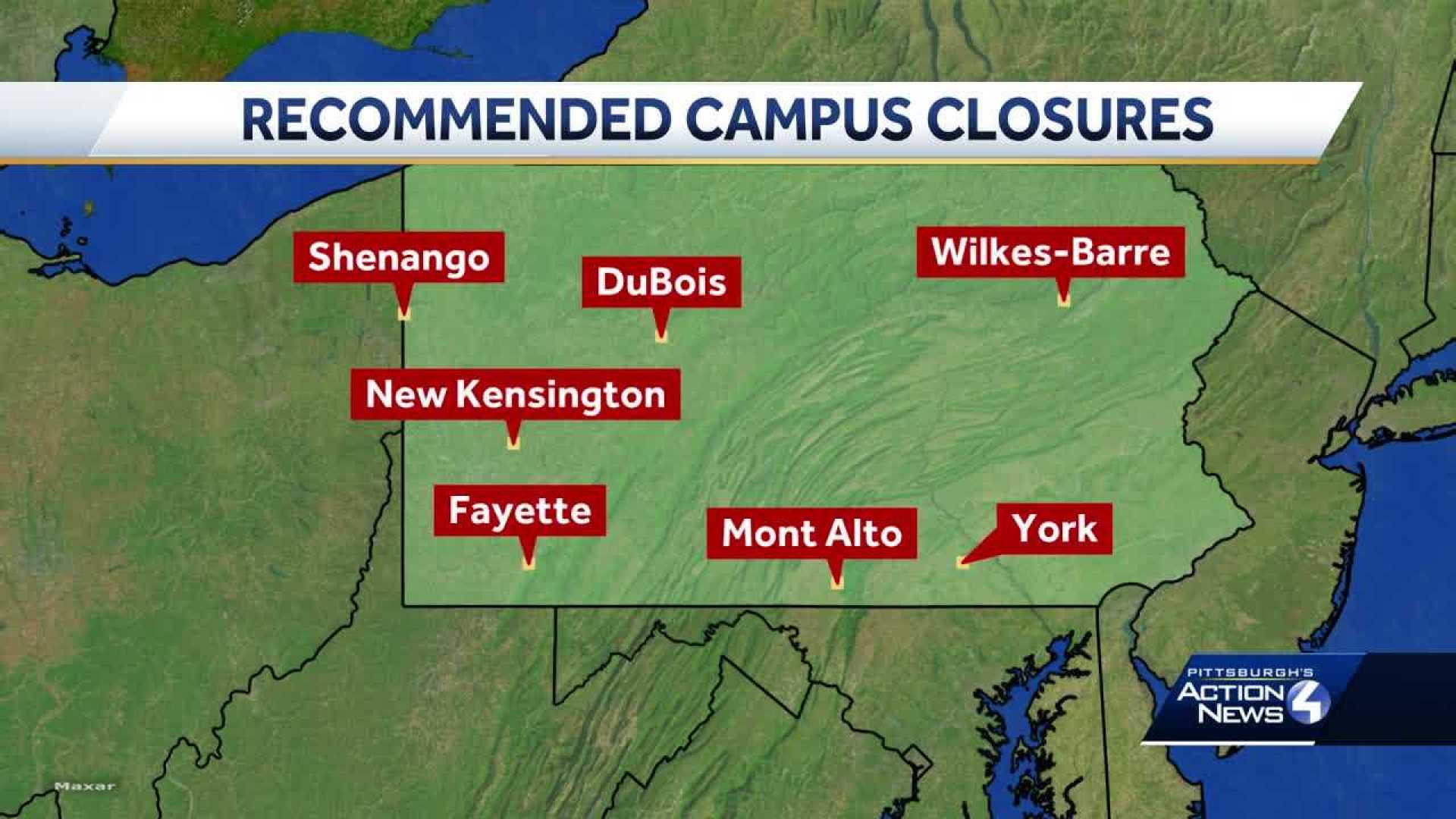Education
Penn State Board Votes to Close Seven Campuses Amid Financial Challenges

Penn State, State College, PA — The Penn State Board of Trustees voted 25-8 during a virtual meeting on Thursday to close seven of its branch campuses across Pennsylvania. The decision comes amid declining enrollment and significant financial losses across these campuses.
The campuses slated for closure include Penn State New Kensington, Fayette, DuBois, Mont Alto, Shenango, Wilkes-Barre, and York, with the final semester set for Spring 2027. University President Neeli Bendapudi addressed the board, stating that the move is necessary to ensure the university’s future stability and growth.
“These campuses have changed lives. They’ve fueled business and brought Penn State into their communities,” Bendapudi said, acknowledging the difficulty of the decision. “However, maintaining the status quo is not sustainable.”
All seven campuses lost money last year and enrollments have dropped sharply. Bendapudi indicated that closing these campuses is expected to save the university approximately $50 million annually and address roughly $200 million in maintenance backlogs. Currently, these campuses together account for only 3.6% of student enrollment and employ 3.4% of faculty.
Trustee Brandon Short, who supported the closures, stressed the need for resource allocation. “Keeping underutilized campuses open despite shrinking enrollment is not sustainable,” he stated. The board emphasized the importance of directing resources towards campuses that demonstrate strategic importance and financial resilience.
Opposition to the closures was voiced by several board members, including Jay Paterno, who argued for more time to gather public input. “We owe them more than closure,” he said, expressing concerns about the impact on rural communities. Board Chairman David Kleppinger noted that feedback from the public indicated a strong sentiment about the closures, especially regarding their effects on first-generation college students.
Bendapudi confirmed that students affected by the closures would receive transition support and resources to help them continue their education at remaining campuses. “This is about making a tough decision today to ensure a brighter future for Penn State,” she said.
As the university navigates these challenges, it maintains that it still has the largest statewide footprint among Big Ten universities, allowing it to serve students throughout Pennsylvania effectively.












